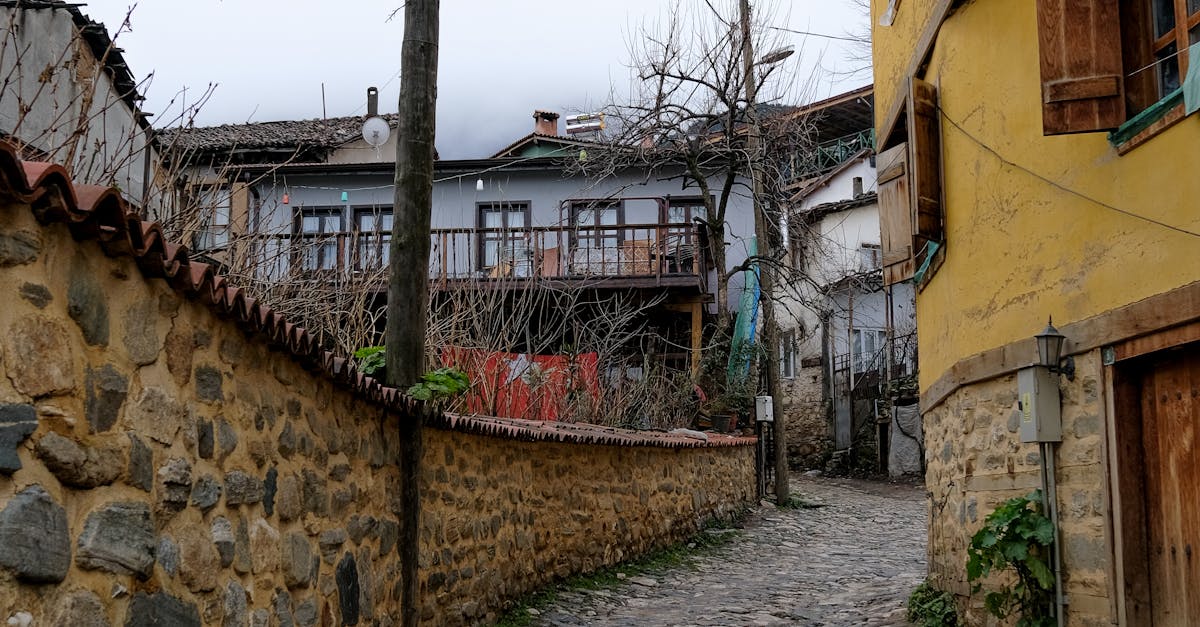Indigenous Use of Cobblestone in Australia
Sealing Cobblestone: Dos and Don'ts
practices and traditions. By incorporating Indigenous designs and techniques into modern cobblestone projects, these ventures are showcasing the rich cultural heritage of Aboriginal communities. This blend of traditional craftsmanship with contemporary construction practices not only adds a unique aesthetic value to projects but also serves as a powerful reminder of the resilience and creativity of Indigenous peoples.It is crucial to schedule regular inspections and reapplications for sealed cobblestone surfaces to maintain their durability and aesthetic appeal over time. Inspections should be conducted at least twice a year to assess the condition of the sealant and identify any areas that may need reapplication. During these inspections, look out for signs of wear and tear, such as discolouration, water penetration, or loss of gloss.
Challenges in Maintaining Cobblestone HeritageReapplication schedules should be determined based on the type of sealant used, the level of foot or vehicle traffic on the surface, and the exposure to environmental elements. Generally, a high-quality sealant applied to a well-prepared surface can last anywhere from two to five years before requiring reapplication. However, it is essential to monitor the cobblestone regularly and reapply the sealant as soon as signs of deterioration begin to appear to prevent any damage to the surface.
Preserving cobblestone heritage poses significant challenges for Indigenous communities in Australia. One major obstacle is the lack of government funding and support for maintaining and restoring historic cobblestone structures. Without financial assistance, many traditional stonemasonry skills are at risk of being lost as younger generations turn to more modern professions.Incompatibilities with Sealing Cobblestone
Additionally, the natural wear and tear on cobblestone roads and buildings over time require constant upkeep and repair. This maintenance can be costly and time-consuming, further straining limited resources within Indigenous communities. Finding a balance between preserving cobblestone heritage and integrating modern infrastructure developments is crucial to ensuring that these unique cultural treasures continue to be appreciated for generations to come.When it comes to sealing cobblestone, it is crucial to be aware of potential incompatibilities that could arise. One common issue is the use of certain materials or sealers that may not bond well with the cobblestone surface. Some sealers contain chemicals that could react negatively with the natural composition of the cobblestone, leading to discoloration, peeling, or overall poor adhesion. It is important to carefully read product labels and consult with experts to ensure compatibility before proceeding with the sealing process.
Balancing Preservation with Infrastructure DevelopmentIdentifying incompatible materials and sealants is paramount to avoid costly mis
d in the rich tapestry of Indigenous culture, weaving together past, present, and future in a tangible form of art and storytelling.Cost Comparison and LongTerm Effectiveness
FAQSWhen considering whether to seal cobblestone surfaces, cost and long-term effectiveness are crucial factors to weigh. DIY sealing projects typically cost less upfront than hiring professionals. However, the effectiveness and longevity of DIY sealing may not match that of professional-grade sealants. Professional sealants tend to be more durable and effective in the long run, requiring fewer reapplications and maintenance over time.
What is the significance of cobblestone in Indigenous Australian culture?In terms of cost, professional sealing services may come with a higher price tag initially, but they often prove to be more cost-effective in the long term due to their longevity and durability. Investing in professional sealing can lead to fewer repairs and replacements down the line, ultimately saving money in the long run. When weighing the cost comparison and long-term effectiveness of sealing cobblestone, it's essential to consider not just the immediate expenses but also the durability and longevity of the sealant used.
Cobblestone holds cultural significance for Indigenous Australians as it represents their traditional stonemasonry techniques and serves as a connection to their heritage.FAQS
How have Indigenous Australians utilized cobblestone in the past?What are the benefits of sealing cobblestone?
Indigenous Australians have used cobblestone for various purposes such as building structures, creating pathways, and showcasing artistic expressions through intricate stonework patterns.Sealing cobblestone helps protect it from stains, water damage, and wear and tear, extending its lifespan and maintaining its appearance.
What economic opportunities are available in Indigenous stonemasonry using cobblestone?How often should cobblestone be sealed?
Indigenous stonemasonry using cobblestone presents economic opportunities through entrepreneurial ventures in construction, preservation projects, and the promotion of Indigenous cultural identity through art.Cobblestone should typically be resealed every 1-3 years, depending on the sealer used, the level of foot or vehicle traffic, and exposure to elements.
What challenges do Indigenous communities face in maintaining their cobblestone heritage?Can I seal my cobblestone driveway myself?
Indigenous communities encounter challenges in balancing the preservation of cobblestone heritage with the development of modern infrastructure, ensuring the longevity of traditional stonework techniques.Yes, you can seal cobblestone yourself, but it is important to follow the manufacturer's instructions carefully to ensure proper application and effectiveness.
How does cobblestone construction contribute to the Indigenous cultural identity?What should I do if I notice the sealer is wearing off?
Cobblestone construction plays a vital role in preserving and promoting Indigenous cultural identity by showcasing symbolism and storytelling through stonework patterns that reflect ancestral traditions and values.If you notice the sealer wearing off, clean the cobblestone thoroughly and reapply the sealer according to the recommended schedule to maintain protection.
Are there any materials that should not be used with sealed cobblestone? Yes, certain materials like abrasive cleaners, acid-based products, and de-icing salts should be avoided as they can damage the sealant and the cobblestone.Related Links
Cobblestone Techniques in Ancient EgyptCobblestone Pathways in Mesoamerican CivilizationsRelated Links
The Cultural Significance of Cobblestone in Early CivilizationsEnhancing the Aesthetic Appeal of Cobblestone with Proper Sealing
Cobblestone as a Symbol of Status in Ancient CivilizationsFactors to Consider Before Sealing Cobblestone Pavers
The Role of Cobblestone in Chinese ConstructionLong-Term Maintenance with Cobblestone Sealing
Understanding the Different Types of Sealers for Cobblestone